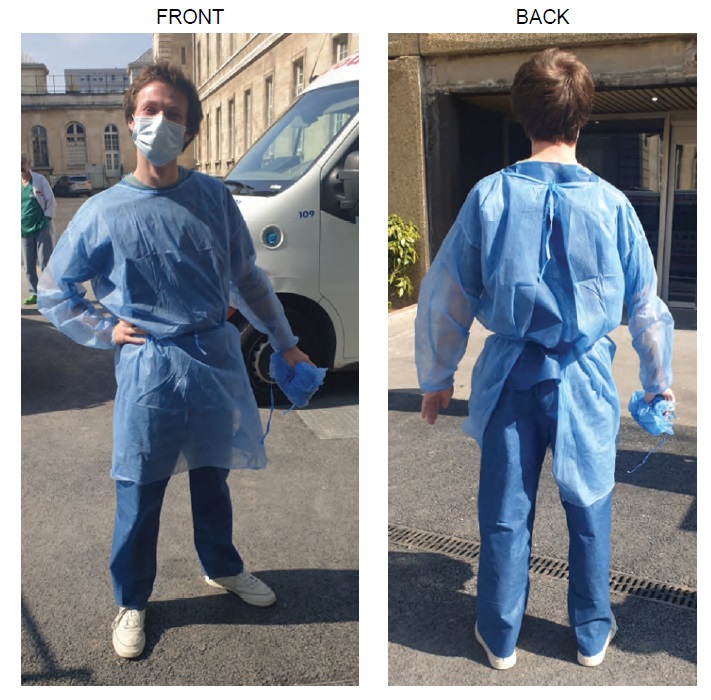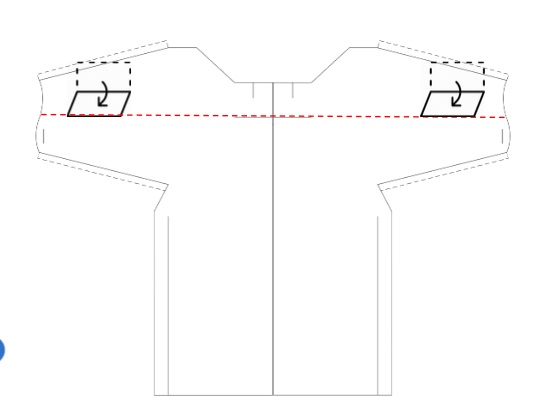Healthcare workers are exposed to infectious body fluids when working in close proximity to patients. Coughing, sneezing, and retching can expel droplets, which can transmit disease if the healthcare worker’s clothing comes into contact with these fluids. A protective gown covers the healthcare worker’s clothing so as to reduce the risk of direct contact with contaminated fluids.
Gowns and Protective Suits
Information on how to get started making protective gowns and garments
Why do we need gowns and protective suits?
What else should I know before getting started?
- The National Council of Textile Organizations has put together a comprehensive resource containing information for many fabric manufacturers, vendors and other professionals in the space – available here.
- An inventory of US manufacturers of non-woven fabrics is available here
What projects can I get involved with to make Gowns and Protective Suits?
Project Name: BC Apparel & Gear Washable Fabric Gown
Notes:
-Fabric for washable gowns can be polyester or nylon ripstop coated with Durable Water Repellent (DWR) or Polyurethane Coated (PU) taffeta.
-Observe the 1st prototype image on their website. There is extra fabric in the underarm area to give wearer freedom of movement.
-This gown has serged, finished seams (important when using nylon) and knit cuffs.
-This is an ideal pattern for scaled manufacturing and produces a quality garment that will stand up to repeated laundering.
Project Name: Hela Washable Gown
Notes:
-This pattern is intended for a reusable gown with plastic-based fabric and heat bonded seams, or a sewn, washable gown made from polyester or nylon fabric with DWR (durable water repellent) treatment.
-The construction includes neck and waist ties which makes production a bit slower compared to the Hela Disposable Gown. -Neck and waist ties should always be the same grade of fabric as the gown material itself.
Project Name: Peekaboo Pattern Isolation Style Gown
Notes:
-Due to the level of sewing and addition of wrist cuffs, this pattern is best used for washable isolation gowns
-With cotton-weight fabric, it could be used for a patient hospital gown
-With ripstop nylon or polyester washable fabric, it could make a reusable isolation gown for staff (see customer notes in the first link).
Project Name: Sabrina Lafone Disposable Gown
Notes:
-Pattern and instructions for a single-use disposable gown
-Note that wrist elastic binding is optional, a thumbhole could be constructed there as an alternative
-When using binding for the neck and belt, make sure it is the same weight as the rest of the gown material, e.g. don’t use a washable cotton binding for a disposable polypropylene gown
Project Name: Blivand Makerspace Disposable Gown
Notes:
-Disposable gown design using plastic sheeting and heat sealed seams
-Other plastic-based fabrics could be substituted
-This gown has been designed for use in international communities
-US based medical facilities may require different gown folding and packaging
Project Name: Protective Suit PS-01 – Manila Protective Gear Sewing Club
Notes:
– The recommended material is Tyvek 1433R
-This design produces a working isolation suit if seams are sealed. Sewing seams make the garment more permeable because of needle holes;
–An only-sewn suit is not ideal for active treatment due to the needle holes increasing the suits permeability.
-Please read through the techpack for full construction details based on what kind of machine you have accessible.
-Dupont has a guide for seaming & sealing Tyvek to itself in order to make sealed seams. Heat sealing the outer edge at 120-130°C before sewing would result in more-sealed, more-robust seams.
-Be sure to communicate with your receiving location whether or not the seams have been properly sealed; provide full info on the design so they can distribute to personnel properly
This information was produced in collaboration with OSCMS. Click here for more information and documentation.







